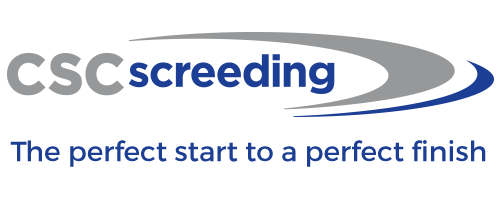
Tomorrow's Flooring
Quite a while ago Spencer Warner, our MD, was getting quite frustrated with having to deal with the same old problems day after day. There were many errors causing issues, wastage (or worse not enough materials being estimated for jobs), screed cracking, screed curling, misconceptions around walk-on times, drying time. This is just a short list and we could go on for hours.
Now, one would think a basic screed is 1 part cement mixed with 4-5 parts of sand and water. If you follow the standard methods and stick to the instructions, there is no real reason why your screed should go wrong. Definitely no rocket science here! But as always, there are a lot of minor looking details which actually makes all the difference for a job well executed.
For instance, all it would take for a perfectly laid screed to start breaking down could be an unwary site worker getting on with his work on an unprotected ‘dry looking screed’. Everyone knows not to step on freshly laid screed/concrete. But how long does the screed/concrete need to be protected from loads and traffic? Simple things. But often underestimated as common knowledge, which in fact it is not.
There are cases when the flooring contractors sometimes choose to lay the flooring a bit too soon to catch up with deadlines. But what they fail to see at that point is the damaging residual moisture trapped in the screed. And when the inevitable happens, it is always the screeding contractor’s head that is pushed to the firing line.
And the real cause for all this? – Lack of awareness about the seemingly ‘little details’.
Screed indeed is expensive. And to make matters worse, most of the cuts and bruises choose to surface only after the final flooring is installed. To remove the flooring, mend the screed and re-do the entire procedure is of course a lot of money, not to mention the time and the effort. You can train your screeders to do the right job, but it is not as easy to inform the rest of your stakeholders to do their bit in sync with your efforts.
Well, it was after one of those typical jobs that went wrong when it didn’t have to that Spencer decided, right chaps we really have to do something. He had seen some resources on the internet but nothing that really cut the mustard. So the decision was finally made to start a resourceful website on screeding. And when it came to the name, we decided to stick with the obvious – ‘Floor screeding’.
But it soon emerged that there were several screeding contractors with domain names that were far too similar to ‘floor screeding’. We wanted to create awareness in the industry, and not confuse it with the names of established companies.
Now, Spencer is one of those people who is extremely passionate about his business and his team’s ability to deliver. When he is not in the middle of work, he would be busy researching screeds and the industry. If you were to catch him on a flight you would find him poring over a huge tome on concrete or screed. So, it is small wonder that friends call him the ‘Screed Scientist’.
And, that was how the idea came about, and we decided to go for Spencer’s moniker. The ‘Floor Screeding’ website became the Screed Scientist’. Some very useful content was added and suddenly the pages shot up in the Google rankings. And it was no surprise to us when the magazine Tomorrow’s Flooring got in touch with us to use the Screed Scientist for their new push to create educational content.

We are very proud to announce that a batch of monthly articles from our Screed Scientist website will now appear in Tomorrow’s Flooring ( See page 30). Don’t forget to check out their latest issue for the first of the set!
